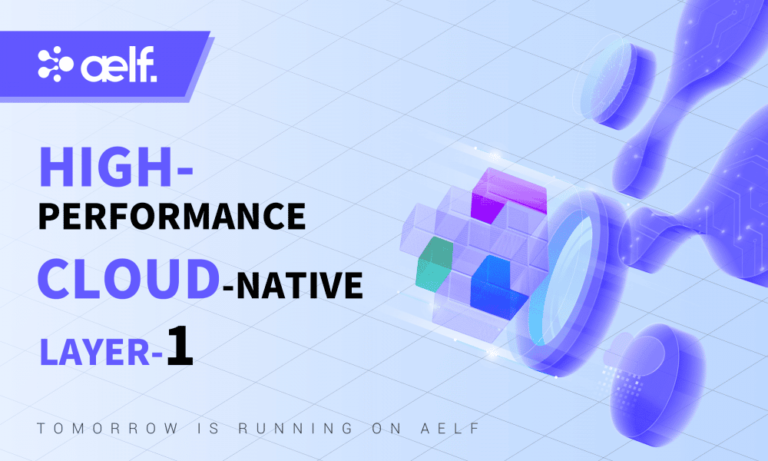
Source: news.google.com
aelf is a high-performance, cloud-native, Layer 1 blockchain network with its Mainnet nodes running in different cloud computing data centers. It provides a high-speed execution environment for smart contracts and enables parallel contract execution and smart contract microservices running on server clusters.
The MainChain and multi-SideChains architecture supports efficient indexing within the network and ensures almost unlimited scalability. And the built-in cross-chain design facilitates ultra-fast data interaction. The innovative hybrid of Shared SideChain and Proprietary SideChain greatly reduces the cost for developers and users and further improves overall network performance.
Improved network performance.
aelf performance optimization can be mainly categorized into two, single-chain and multi-chain.
1. Single-chain performance
- High-speed execution environment for smart contracts. The speed of execution of aelf smart contracts, as tested, is 1,000 times faster than EVM. Test codes can be found in your report on github or in a previous article.
- Execution of smart contracts in parallel. As stated in the contract definition and pre-execution phase, aelf categorizes smart contracts by tags so that contracts in a block can be executed in parallel;
- Smart contract microservitization can run on server clusters. Based on the gRPC protocol, aelf defines the smart contract remote call protocol, realizes aelf contracts as microservices, and realizes automatic scalability of the single-chain smart contract operation environment by combining them with the cloud computing strategy.
2. Multi-chain performance
- MainChain and multi-SideChains architecture: This architecture allows the blockchain network to be indexed efficiently and scaled unlimitedly. Suppose you index 8 SideChains in each layer, then in a three layer network, aelf can index a total of 8*8*8 SideChains. That means 512 SideChains, and if it is in four layers, the total number of indexed SideChains will be 4096. You can help aelf and its developers to create a Web3 application on each SideChain;
- Shared SideChain and Exclusive SideChain
- Developers use shared SideChains to verify their projects. Whereas for exclusive SideChains, the verification process is removed and users will not be charged, therefore performance is greatly improved. Exclusive SideChains adopt a charging mode similar to the monthly charging of Amazon servers;
- Built-in cross-chain functionality: To ensure data interaction within all blockchain systems (internal), aelf performs integrated cross-chain data interaction. This is achieved by the interaction of the production nodes with each other in the data center.
DAO governance system
aelf’s governance design supports the blockchain to be highly decentralized and ensures the security and scalability of the network. Currently, Mainnet nodes are run by different organizations in various cloud data centers. aelf has a mature online DAO governance system. Users can participate in network maintenance through the voting system using their ELF tokens, and by voting they can receive participation rewards.
Use cases of your native ELF tokens
Users can bet and vote using ELF to participate in governance. In addition to this, the token is also used to pay transaction fees or purchase resource tokens.
Transactions on the aelf network are settled in ELF, and this includes transaction fees and SideChain index fees. It only takes around 0.3 ELF to complete a transaction which is much cheaper than Ethereum.
Resource tokens are used by developers. These are tokens required for projects to develop and run on aelf, and there are a total of 8 types of them. Depending on their own needs, developers can choose which resources/resource tokens to use and buy the tokens with ELF. ELF is also used to pay method fees for calling smart contracts.
It is worth noting that ELF here refers to Mainnet ELF rather than ERC-20 or BEP-20 tokens. Although aelf supports four types of ELF tokens, it is the Mainnet ELF running on the aelf blockchain that can act as a ticket to the aelf ecosystem and governance.
Developer Experience Optimization
aelf has been constantly optimizing its own infrastructure, products, and services to make the developer experience more user-friendly and seamless.
To better support the growth of the ecosystem and meet different development needs, aelf has created and opened a complete set of DApp development frameworks and tools, including blockchain explorer, extension wallet, application wallet, Multi-language SDK, aelf CLI and event handler. , aelf Boilerplate, query chain data system like The Graph, contract template and code generator etc. These projects are open for everyone to develop and you can get more information at GitHub.
aelf’s vision of Web3
aelf has great faith in the development of the Web3 industry and is trying its best to keep up with it. It has the ambition to lead the development of the industry. aelf will play an important role and provide an accessible entrance to the metaverse for everyone.
Since C# is used to create smart contracts in aelf, it will attract developers from the Unity community to write smart contracts here, which will take aelf one step closer to the goal. To achieve this, the team is more than dedicated to building Web3 and other infrastructure such as privacy computing, decentralized storage, and decentralized identity (DID).
road map
With the set goal of supporting the development of Web3 and its explosion in the next 5-10 years, aelf promises that it will continue to update its own technology and products while promoting the growth of the ecosystem. Recently, the team has been busy negotiating with their communities, and so far, they have revealed some exciting proposals that have been submitted, all contributing to the aelf ecosystem. Names like cross-chain bridge, wallet, and DAO were mentioned. Sounds like your community should be poised for a boom year.
For more information on aelf, see your official website and follow them on Medium either Twitter.
Disclaimer: This is a paid post and should not be treated as news/advice.
Read More at news.google.com